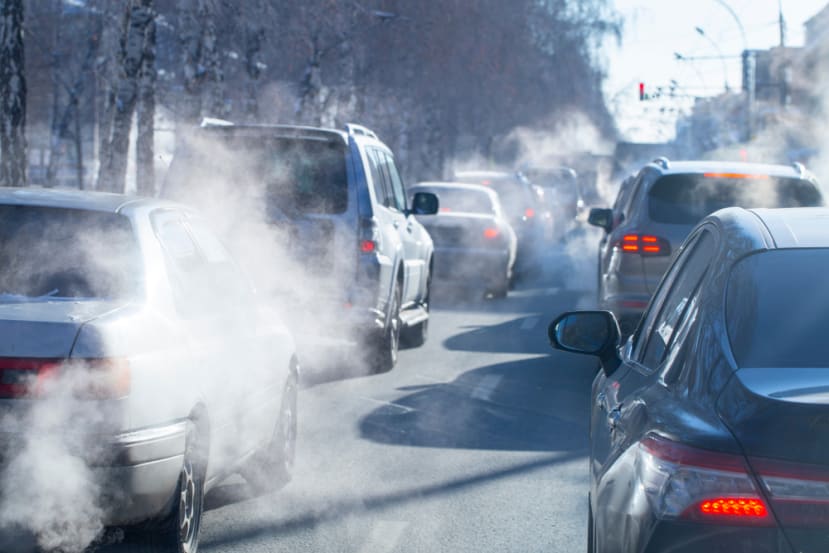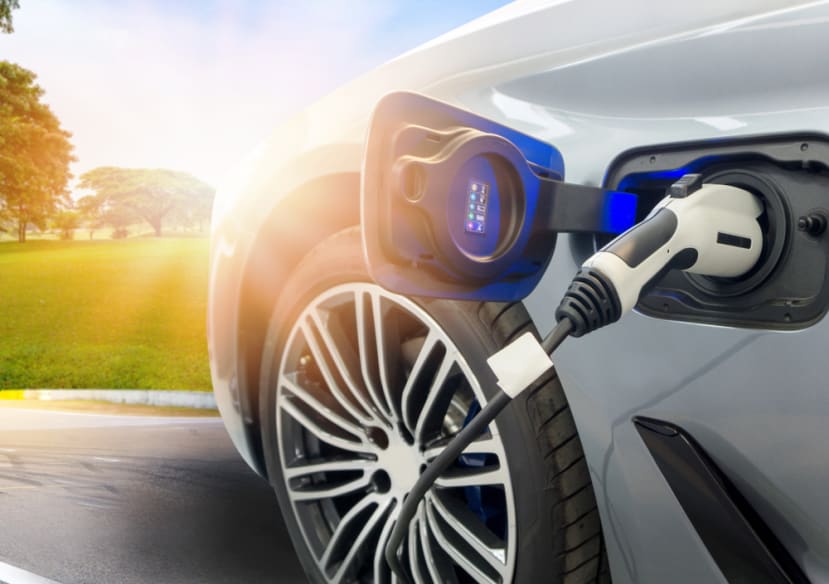Cleaning up the skies and space
Follow articleHow do you feel about this article? Help us to provide better content for you.
Thank you! Your feedback has been received.
There was a problem submitting your feedback, please try again later.
What do you think of this article?
Feel the need for speed
What is it about our quest for speed? Since time began we’ve always had a thirst to go faster and further, developing the means to do so along the way. From chariot racing in ancient Rome, to naming our cartoon characters ‘Speedy Gonzales’ - we’ve been obsessed.
Looking back, I guess the real turning point came with the Industrial Revolution. The invention of the steam engine and Stephenson’s Rocket paved the way for things to really heat up. It wasn’t long before we were introduced to the combustion engine, which brought with it the harnessing of fossil fuels to create petrochemicals and… bingo! Welcome to the world of cars, planes, trucks and trains.
Did we stop there? No, we didn’t even catch our breath. Instead, we hurtled towards the development of diesel, jet and rocket fuel – so that we could really up the stakes and risk speeds of at least 17,800 miles an hour to propel us beyond Earth’s atmosphere![1]
What has it cost us?
All of these innovations are testament to our engineering minds and capabilities, but in the long run, what has this progress really cost us? (and I’m not talking monetary value, which would be eye-watering).
Well, first of all, we have plundered the earth’s stash of fossil fuels. The supply isn’t unlimited and before long, in the very near future, we will run out.
Then there’s the emissions we get from burning fossil fuels. Did you know that not only is it a major contributor to global warming and climate change, but transportation alone is responsible for around a fifth of all CO² emissions worldwide? I know it’s hard to fathom, isn’t it? But when we jump into our cars we’re contributing to 39% of those emissions[2].
Pile on top of that the harmful pollutants released into the environment, such as benzene, lethal mercury, acid rain and carbon monoxide, to name a few, all of which can affect people’s health - and now you can see the real costs mounting[3].
So, surely with all of today’s technology, there must be another, more sustainable way, to power our transport and need for speed?
Let’s plug the obvious
Well, one of the most obvious and increasingly popular choices has been the rise of the electric vehicle (EV). In the UK alone there’s been a Government commitment since 2020 to phase out new petrol and diesel cars by 2030, with new cars and vans to have zero emissions by 2035[4].
Well, that’s solved then, I hear you cry…but there are still challenges that need to be tackled before we can all breathe easily (literally). For instance, does everyone have easy access to charge their EV? There needs to be a huge infrastructure for charging in place to support the nation’s requirements. Over 2 billion pounds[5] has already been spent by the UK to support the zero-emission vehicles, with a strategy outlined for an EV charging network, featuring 300,000 public charging stations, to be in place by 2030[6].
Now, before you all rush out to hook up a new EV, ask yourself these questions: Can the UK power grid support an EV infrastructure? And more importantly, what’s the source of the electricity that will feed those charging points – how sustainable is it?
Well, the good news is that the UK power grid is designed to handle the peaks and troughs of energy demand throughout the day and year with sufficient spare capacity to comfortably take on the increase that comes with EVs – especially as most will be charged overnight when demand is at its lowest.
As for sustainability, there’s still work to be done. If we look a the UK Energy in Brief 2022 it shows that 45% of the UK’s electricity in 2021 was still being generated through the traditional, unsustainable sources of gas, oil and coal, with 39% from the more sustainable hydro, wind and solar power. So, if the main source of power to generate electricity is still the burning of fossil fuels, are EVs as sustainable as we thought?...and that’s without getting into the material side of things, such as the mining of lithium for batteries!
However, all things aside, EVs can be up to 70% more energy efficient than their diesel and petrol counterparts. In fact, diesel cars struggle to achieve 40% fuel efficiency, while combustion engines waste or lose 50% of the energy in its fuel[7]. Not only that, EVs are much better for the environment, emitting less toxic air pollutants and greenhouse gases. Research undertaken by the European Energy Agency found that even after taking into account how the electricity is generated, carbon emissions from EVs are up to 30% less than a petrol or diesel vehicle[8].
And speed? Well, don’t underestimate our electric alternative, there’s plenty out there that can give petrol and diesel a good run for their money, from the Porsche Taycan reaching 60 mph in 2.4 seconds and a top speed of 162 mph, to the Rimac Nevera reaching 60 mph in 1.74 seconds and a top speed of 258 mph[9]. Extreme, but the point is made!
Up, Up and away
Now, we can’t talk about man’s obsession with movement without looking up to the heavens and exploring aviation. How do we clean up the skies?
The aviation industry has set itself a challenge to achieve net-zero carbon emissions by 2050. To do that they need to look at sustainable aviation fuels (SAF). By adopting SAF, such as waste oils and fats, the flight emissions could be reduced by as much as 80%, according to the International Air Transport Association. I know! A flight on old chip fat – who’d have thought? But SAF can be created from a whole range of green sources including agricultural waste and carbon captured directly from the air – the only thing stopping its adoption is the high production costs and low availability of SAF.[10]
What other options can we consider? Well, in our DesignSpark podcast, we talk to Cranfield Aerospace Solutions, who are converting an existing aircraft from fossil fuel to using hydrogen fuel cell technology.
This technology produces zero CO² emissions, has 1/10th energy density in its batteries compared to conventional aviation fuel and is cheaper. In essence, they are building the first fully certified, zero CO² emission, hydrogen fuel-powered aircraft.
Listening to the podcast, you’ll hear about ‘Project Fresson’ and how they have completed the design stage for the flying demonstrator and are now into subsistent testing and manufacturing.
Learn about the challenges they face packaging the system to fit the plane – because running on hydrogen requires a lot of space. Ironically, although it is the lightest element known to man, it requires a lot of heavy material to keep it contained, as it has a desire to want to leak through everything, like a gas. So, what they’ve achieved with packaging the system is incredible – unique in fact, fitting a hydrogen fuel cell (HFC) system sized to produce 110% of the engine it’s replacing, making it the most volume-dense HFC system on the planet currently – something that they are all proud of.
They talk about the future and how scalable their model is, the challenges it brings and the excitement at having the first certified revenue-earning service, with fare-paying passengers and freight services on the horizon – all powered by hydrogen. You won’t want to miss this, it truly is the 3rd revolution of aviation. Listen to the podcast now!
In a galaxy, not so far away…
Of course, not all pollutants are invisible emissions. Man is also guilty of fly-tipping on the back of technology and creating new challenges, when it comes to cleaning up.
This has become more obvious in the case of space junk or debris. How do you clean up 8,000 tons of rubbish in our orbit? What is it? Well, it can be anything sourced from man that we cannot control anymore. Sizes can range from part of a dead satellite weighing 4.5 tons, to a screwdriver dropped during a space station repair, to frozen urine! And it’s dangerous…travelling at speed levels of 7km per second, (that’s the same as travelling 800km from Marseille to Paris in less than a minute), causing explosions on impact.
Is it really a problem you may ask? After all it’s way up there and not in our way?
Wrong, it’s important to keep our orbit clean to safeguard our technical lives and stay connected. From navigating in a vehicle, to watching TV and using our mobile phones, we’re reliant on satellites. This is why the European Space Agency have the Clean Space Initiative to help clean it up, as well as develop engineering ideas for space.
You can hear all about their challenges, when we speak to the Head of the Clean Space Initiative in our podcast – it’s fascinating!
When it comes down to it we’ll never lose our obsession to go faster and further – the question for the future is, can we do it greener?
Sources:
[1] https://spaceplace.nasa.gov/launching-into-space/en/
[2] Cars, planes, trains: where do CO2 emissions from transport come from? - Our World in Data
[3] Fossil Fuels: The Dirty Facts (nrdc.org)
[4] Electric vehicles and infrastructure - House of Commons Library (parliament.uk)
[5] £56 million of public and industry funding electrifies chargepoint plans across the country - GOV.UK (www.gov.uk)
[6] Taking charge: the electric vehicle infrastructure strategy (publishing.service.gov.uk)
[7] Why EVs are more efficient than any fuel-burning car | EDF (edfenergy.com)
[8] Benefits of Electric Cars on Environment | EV & Petrol Cars | EDF (edfenergy.com)
[9] https://www.autoweek.com/rankings/g45433196/fastest-electric-cars/
[10] Can the aviation sector get to net-zero emissions by 2050? | World Economic Forum (weforum.org)
We would like to credit 'Chris Armstrong' as the researcher for this article.








Comments